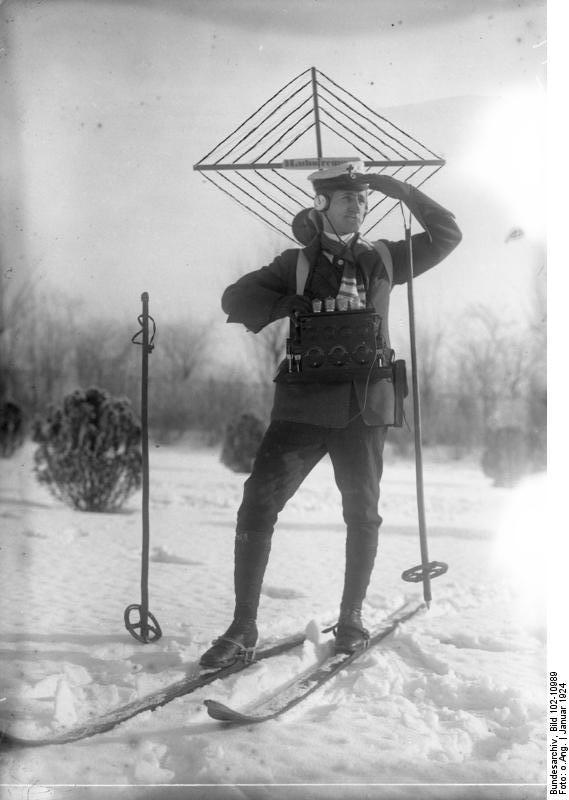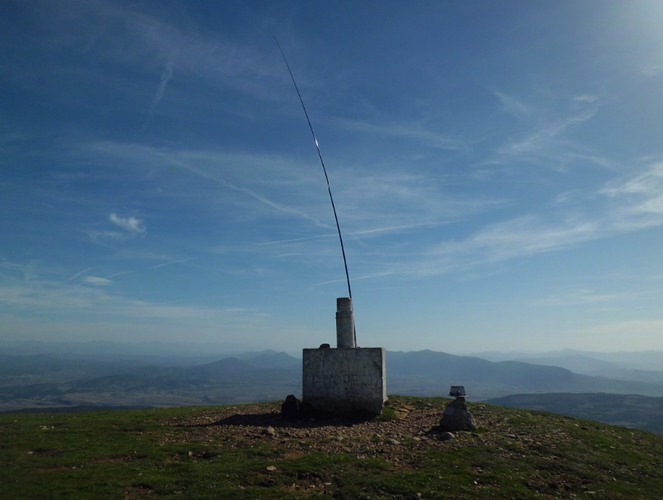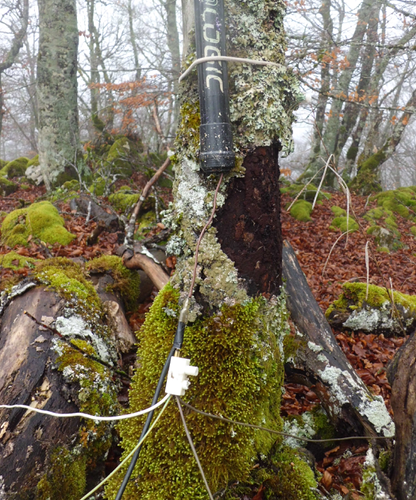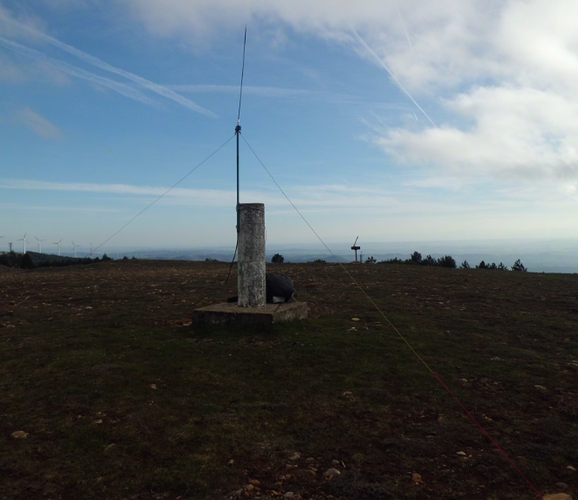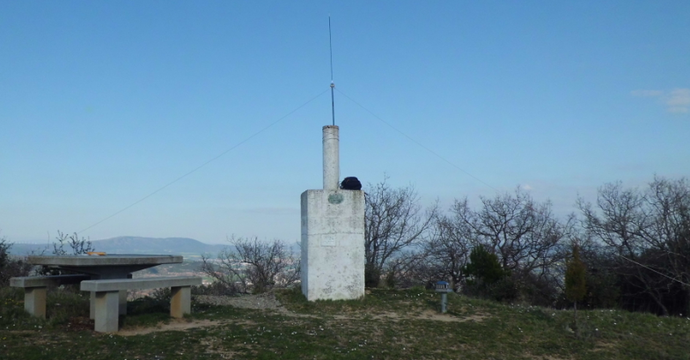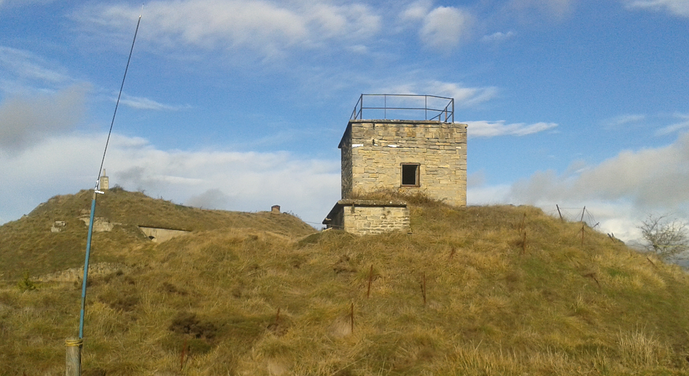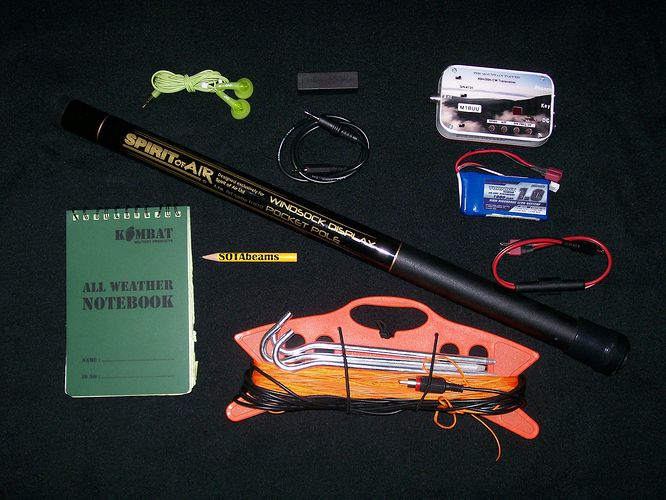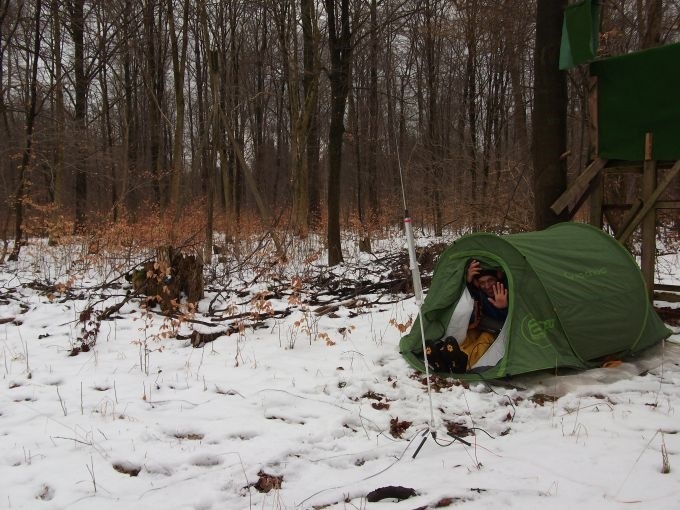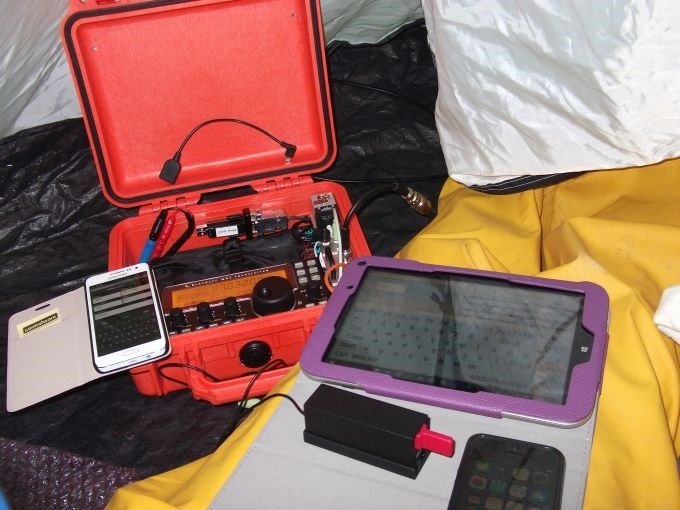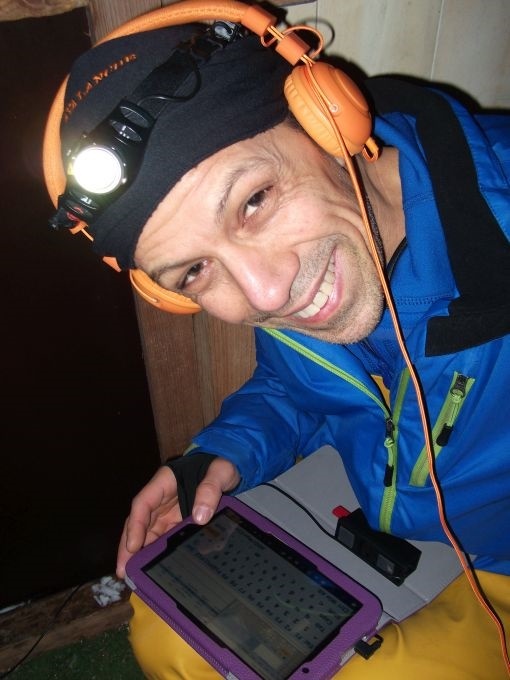I prefer using random vertical wire GP instead of linked dipoles as I find GP lighter and easier to carry, install, set-up and mainly because they are omnidirectional.
When I’m activating from a summit, I want my signal spreading all around, so I can expect chasers from anywhere.
My preferred one is this 7m telescopic fiberglass fishing rod from Decathlon with a 7m wire inside it up to the top
The bottom end of the wire connects through a faston connector to the RG58 center wire. The coax braid is connected with another faston and this white chocolate block for electrical connection to 4 wire radials which I may lay down on the ground or hold elevated on bushes and branches when available and possible. The length of these radials was nearly 5m each but one broke some weeks ago and it may be 3m now.
I have some few times used a home made magnetic loop antenna, but mine -shown in this picture held with a photograph tripode- is too big and heavy, so I’ve only used it some time ago in very easy access summits.
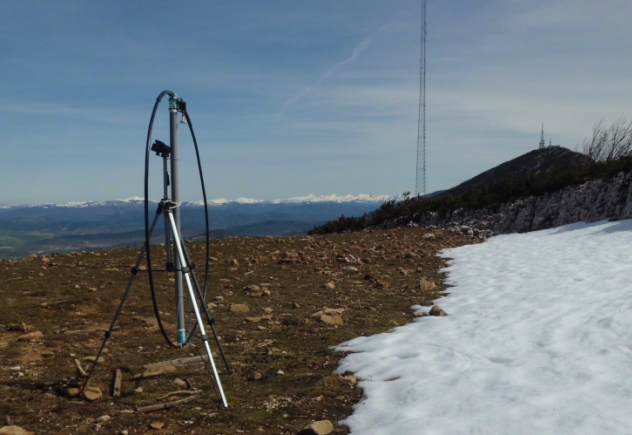
Another light and very fast to deploy vertical antenna is this one shown in the next pictures. It consist in a monoband mobile whip and wire radials on top a PVC tube…
Firstly I used it with 2 wire radials:
But I currently use it in my Saturday morning express activations with just one single wire radial sloping down and keeping the final end above the ground. There’s no difference in terms of stations logged in an activation or S/R signal reports.
I have mobile whips for 10, 15, 20, 40 and 80m but I have only used 10, 20 and 40m so far.
Before starting my hike, I choose the band I will activate and I just take one or two whips with me. The single wire radial has links in it so I can set it up for 10, 20 or 40m.
Of course dipoles do very well also, but I don’t think they do neither worse nor better than verticals. At the end of the day, most of us work all the chasers in the pile up and we don’t work anymore not because our antenna can’t reach further or copy weaker signals, but because there are not any more chasers calling us in the time we are QRV from the summits.
Best 73 de Guru

